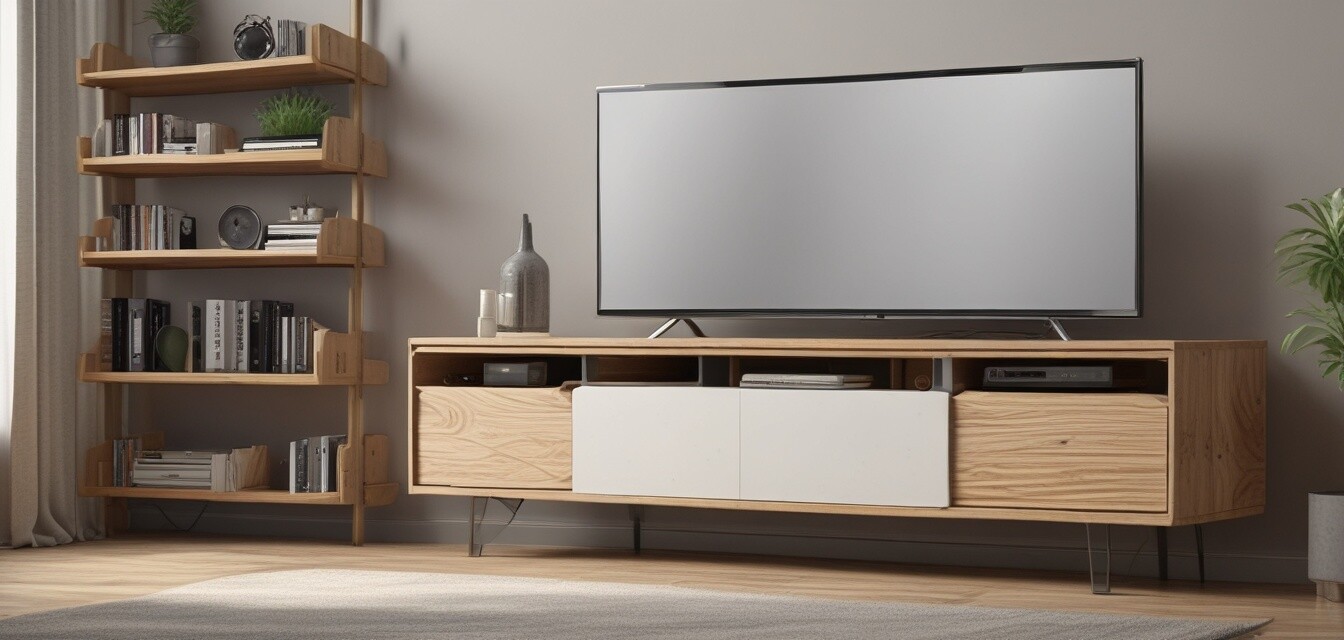
Eco-Friendly Furniture Collaborations to Watch
Key Takeaways
- Collaboration between brands is creating innovative, sustainable furniture design.
- New eco-friendly materials are becoming more widely used in TV stand production.
- Highlighting various upcoming collaborations that promote sustainability.
- Consumer interest is shifting towards environmentally friendly furniture options.
In the ever-evolving world of furniture design, collaborations between brands are leading the way towards more sustainable practices and innovative creations. Eco-friendly furniture has garnered increasing attention as consumers become more environmentally conscious. This article will delve into exciting collaborations that focus on eco-friendly furniture design, particularly highlighting new TV stands and their architectural advancements.
The rise of eco-friendly collaborations
As sustainability becomes a priority in consumer choices, many furniture brands are joining forces to create environmentally responsible products. Collaborations often combine the strengths of each partner, leading to innovative designs that emphasize sustainability and functionality. Here are some notable collaborations to keep an eye on:
| Collaboration | Brands Involved | Focus Area |
|---|---|---|
| Wood & Recycled Works | GreenDesign & EcoWorks | Recycled wood and modern aesthetics |
| Nature Meets Space | NaturalLine & Space Interiors | Earthy materials for minimalistic spaces |
| Function Meets Design | EcoComfort & Trendy Spaces | Stylish multifunctional TV stands |
| Past Meets Present | ClassicWood & ModernGreen | Vintage styles with eco-friendly materials |
Innovative materials in eco-friendly furniture design
One of the key aspects of these collaborations is the materials being used. A growing trend in the furniture industry is the adoption of materials that are sustainable and environmentally friendly. Below are some materials making waves in new furniture collaborations:
- Recycled wood: Utilized for its durability and aesthetic appeal while reducing waste.
- Bamboo: A fast-growing, renewable resource increasingly used in modern furniture designs.
- Recycled metal: Offers strength and a unique industrial aesthetic while minimizing resource extraction.
- Sustainable textiles: Fabrics made from organic cotton or recycled materials help reduce environmental impact.
Spotlighting key collaborations
From innovative designs to eco-friendly initiatives, here are examples of collaborations driving sustainable furniture forward:
Pros
- Stronger emphasis on sustainable practices across the industry.
- Enhances creativity through collaboration, merging different styles and philosophies.
- Provides consumers with diverse options that promote eco-friendly choices.
Cons
- Some products may come at a higher price point due to the quality of materials.
- Not all collaborations maintain a focus on sustainability in their final products.
Looking ahead
As consumer preferences for eco-friendly products continue to grow, the influence of sustainable collaborations will likely shape the future of furniture design. Emerging trends in materials and innovative concepts are paving the way for a greener, more responsible furniture market.
Join the movement
With the increasing shift towards environmental consciousness, staying updated on eco-friendly furniture trends is essential. For more insights, check out our other articles on eco-friendly living and explore our buying guides in the Buying Guides section. Each article serves as a resource to help you make informed choices that contribute to a sustainable future.
Final thoughts
Eco-friendly furniture collaborations showcase the creativity and commitment of brands to create sustainable solutions for modern consumers. Keeping an eye on these collaborations can provide a glimpse into the future of furniture design, encouraging a shift towards greener practices. As you look for eco-friendly TV stands and furniture pieces, ensure you prioritize sustainable options that align with both functionality and environmental responsibility.